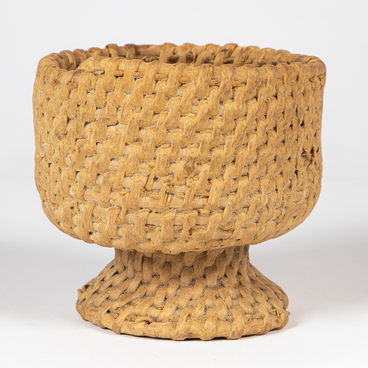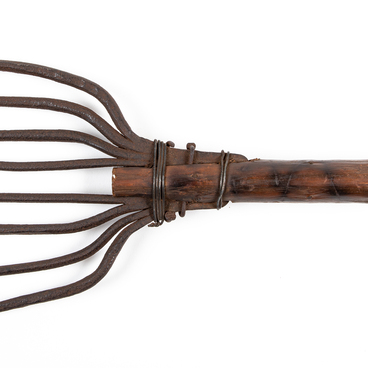The collection of the Sheltozero Veps Ethnographic Museum named after Rurik Petrovich Lonin features a hunting powder flask, donated to the museum by a resident of the village of Drugaya Reka, Yakov Dimitrievich Ershov.
Hunting is the oldest occupation of the Veps. In the 15th–17th centuries, it was one of the main sources of monetary income. A hunting trip lasted several days at a time. The Veps were engaged in two historically established forms of hunting — game and fur trapping, with the latter being the prevailing form. They mainly hunted hare, squirrel, fox, marten, otter, mink, ermine, wolf, bear, elk, badger, lynx; of the game birds — black grouse, wood grouse, hazel grouse, partridge, duck, etc.
From the manuscript of the Karelian ethnographer Konstantin Kuzmich Loginov, a copy of which is kept in the Veps Ethnographic Museum, it follows that the Veps hunter, going hunting, wore a shirt, wool canvas trousers, a caftan of the same materials, and in winter — a sheepskin coat on top. The shoes were leather boots. The indispensable attributes of Veps hunting were a belt and a knife. The knife was kept in a rawhide sheath and hung from a belt in front. There were wooden pads inside the sheath for a strong fixture of the blade. The mittens were knitted from wool with a single needle by the hunter himself. These mittens were not used anywhere except for hunting. They were carried in a canvas shoulder bag. The hunter was also distinguished by a special hat with long flaps that tied around his neck. In addition, a rifle, a cap gun, and a ramrod were needed for hunting. The equipment of the Veps hunter also included a powder flask (could be made from cow horn, wood, deer or elk horn), a measuring stick, a horn with a stopper for percussion caps, a bag for shot, a bag for wadding (scraps of linen sliver) and bullets. Skis have always been used in winter hunting.


